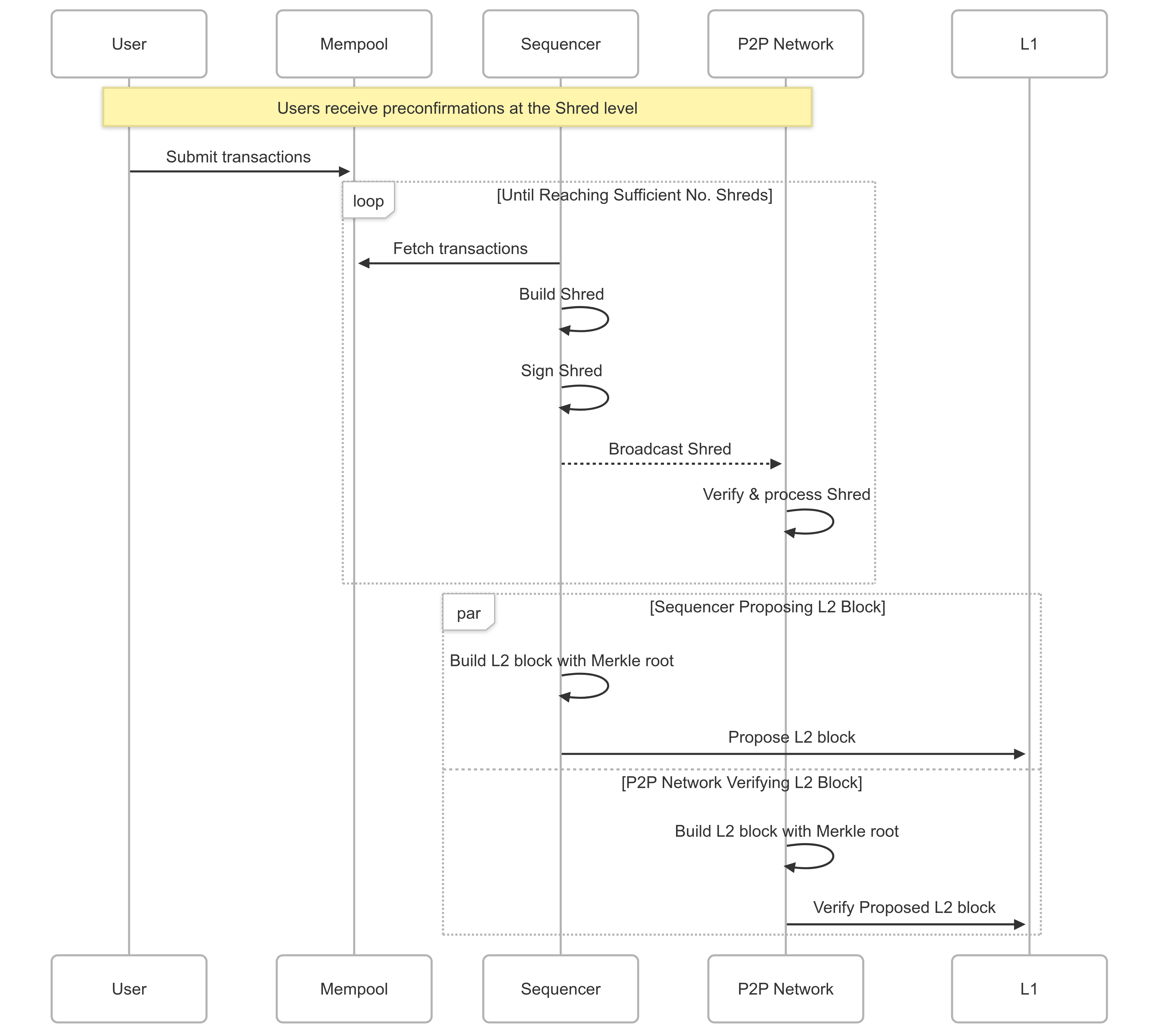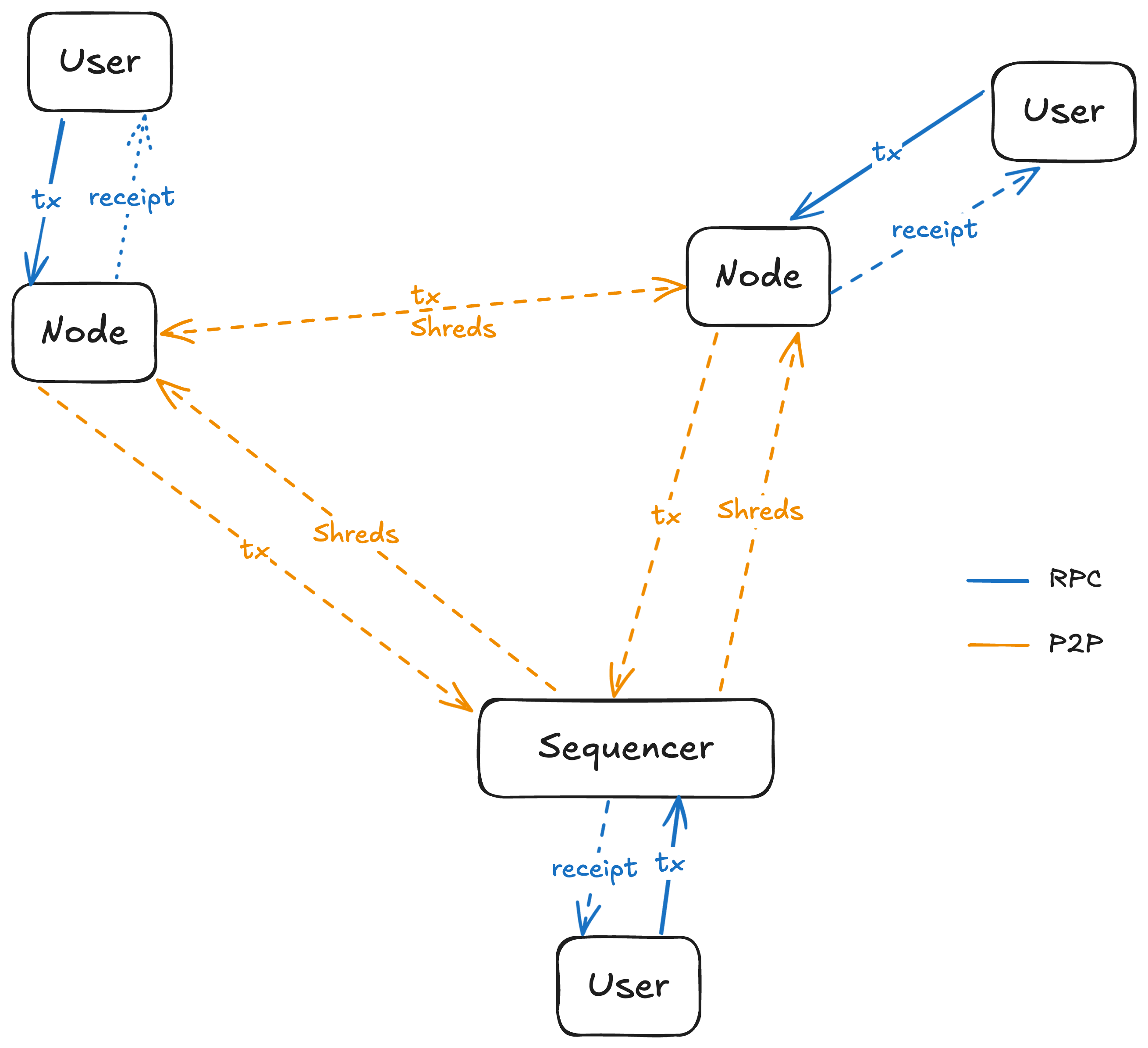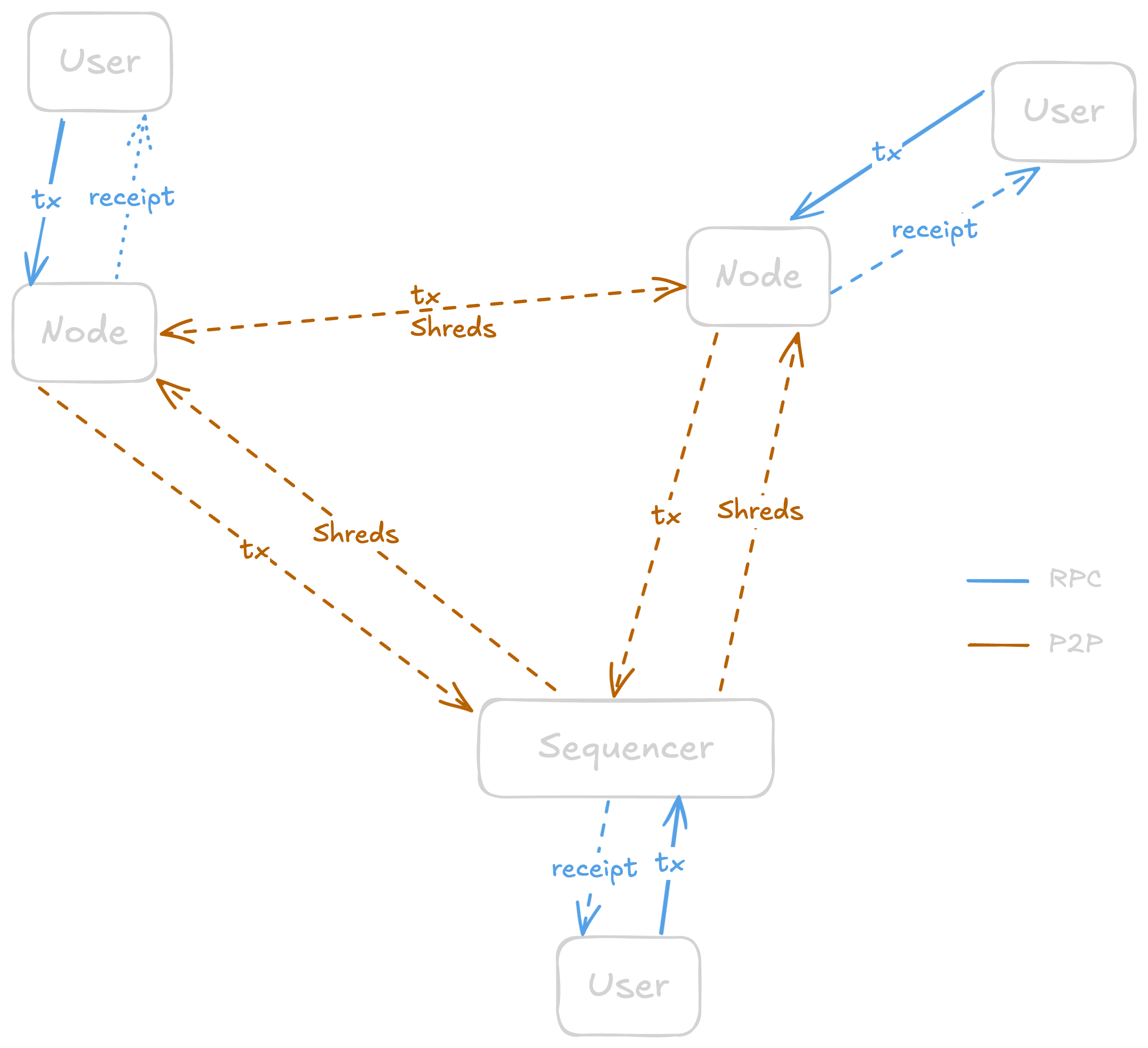

When posting summaries to L1 and DA (i.e, posting transactions to DA and proposing new

block_num and seq_num together can always identify a
A
Block Propagation
Broadcasting is done per


The sequencer might also broadcast the
Batch Preconfirmations
Preconfirmations are issued per batch via
Efficient Merkleization
Merkleization's performance is influenced by both the size of state data and the number of changes (i.e., the size of the
Merkleization for an L2 block only happens after the last